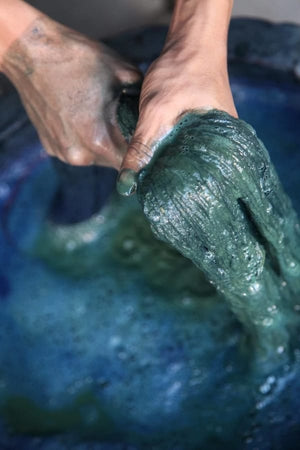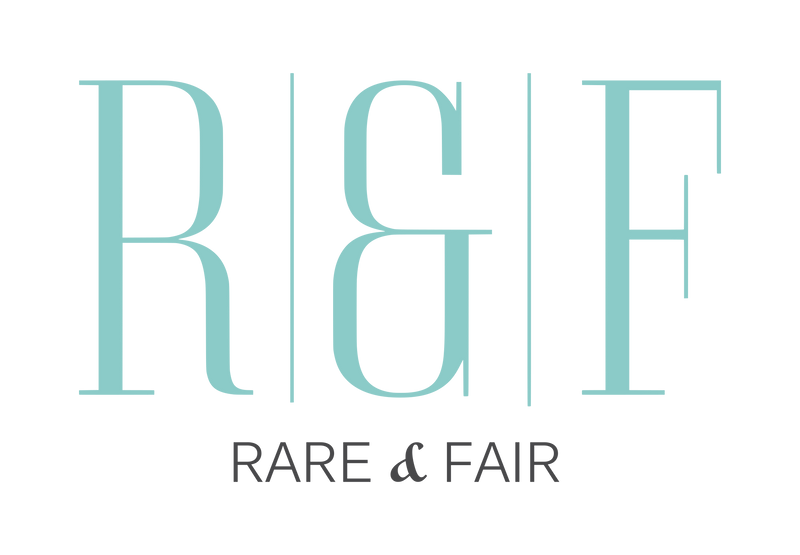Using handwoven Ikat silk, the Chermarn mini dress incorporates an intricate rose design with fabric of the highest quality. Ethically made using locally-grown silk and traditional Ikat dye methods passed down from generation to generation, the Chermarn mini dress represents a fragment of rich history and tradition.
The Journey
Japoh Thai Silk
In the district of Pak Thong Chai, in the Northeastern province of Nakhon Ratchasima, Thailand, sits Japoh Thai Silk - a small co-operative launched in 2011 by locally revered artisan Somwang Supin.
Somwang and her team at Japoh Thai Silk create high quality, unique patterns of handwoven pure silk fabrics, working tirelessly to follow traditional methods and keep ancient techniques alive. By focusing on incorporating modern patterns whilst maintaining traditional Ikat silk designs, Somwang is able to preserve ancient techniques while fusing them with the modern fashion world. We see this reflected in the Chermarn dress with the delicate blend of a modern rose pattern and the top of a traditional pagoda.

Sericulture - where does silk come from?
Somwang was immersed in local traditions from a young age, in particular the practice of sericulture: the method of hand-rearing silkworms to create pure silk yarns, a process that has been around for thousands of years. It is an involved and lengthy operation that follows the entire lifecycle of the silkworm - from growing mulberry trees to feed the silkworm, raising the silkworms, learning how to extract the silk yarns, natural hand dyeing techniques, to eventually, hand-weaving the silk on traditional looms.
Traditionally, most young women in Pak Thong Chai were brought up learning the art of sericulture, and, for many, it has proven to be an important lifelong skill. All of the silk supplied to Japoh Thai Silk comes from local co-operatives that are known personally to Somwang, resulting in a completely transparent supply chain.
The Art of Ikat Pattern Weaving
Although Somwang is skilled in all areas of silk weaving, her most prized skill is Ikat Weaving: also referred to as ‘Mudmee’, Ikat Weaving is a form of handloom pattern weaving based on traditional tie-dye methods, and is the oldest form of pattern weaving in Thailand.
It begins with stretching out the silk and marking the desired pattern, which is then hand-bound with tight wrapping before the dyeing and weaving begins. It is an incredibly intricate process taking great skill (and patience!), and thus it has gained wide-spread respect across the industry. Handwoven Ikat silk is a much sought after fabric, prized by textile collectors all over the world.

These unique weaving techniques were passed down from Somwang’s elders, binding generation to generation. Quite simply, the practice of handloom Ikat weaving acts as a bridge between the past, present, and future.
Why We Love This Process
Ethical, Slow Fashion
From growing mulberry trees from seeds to the final weave of the Ikat silk fabric, every step of the process is slow, thoughtful, and nothing is mass-produced. There is transparency throughout the entire process, and we love how the team at Japoh Thai Silk are keeping their unique traditions and methods alive through their beautiful handwoven Ikat creations.
Preserving cultural heritage
With such a strong focus on tradition and culture, Japoh Thai Silk is the epitome of what binds a community together - we all know that humans succeed the most when they feel connected, respected, and have a purpose, and Somwang and her team provide a platform for success as a community, and we are thankful to be a part of it.
With a lifetime of experience in Ikat and traditional handwoven silks, Somwang has ensured that Japoh Thai Silk has maintained connections to the past, and continues to infuse traditions into every piece of clothing they create.

One Tambon One Product (OTOP) programme
Somwang and her team at Japoh Thai Silk have partnered with the One Tambon One Product (OTOP) programme, an entrepreneurship stimulus run by the Thai Government. The scheme chooses a traditional skill unique to each tambon across Thailand, and provides support and marketing to raise the profile of the product and preserve local wisdom, in this case, handwoven Ikat silk fabrics.
By partnering with the OTOP, Somwang and her team are able to keep traditional methods alive, empower local women artisans in business, and make a positive difference to their local community.

How to wear
With its beautiful floral design, puffed sleeves, and self-tie detailing, there are so many things to love about the Chermarn dress. You might be inclined to save this mini for the summer months, but pair it with soft tights, warm boots, and a chic pullover, and you’ll be all set for those frosty days ahead.
Gatherings might be few and far between this festive season, but looking and feeling great is always on the cards. Send us your pictures wearing the Chermarn mini dress, or tag us on social below.


